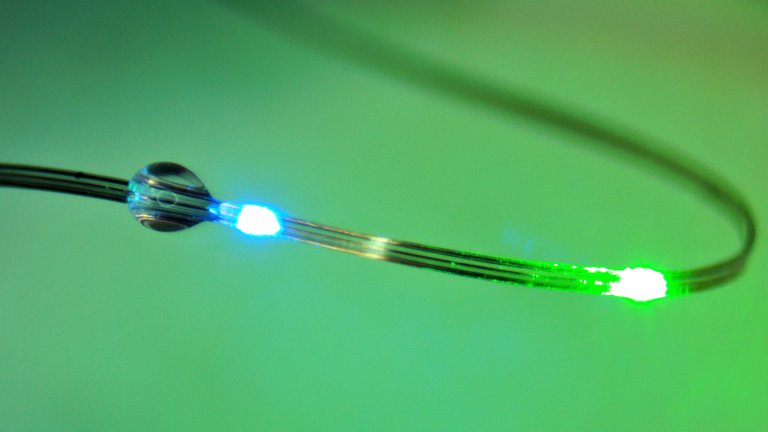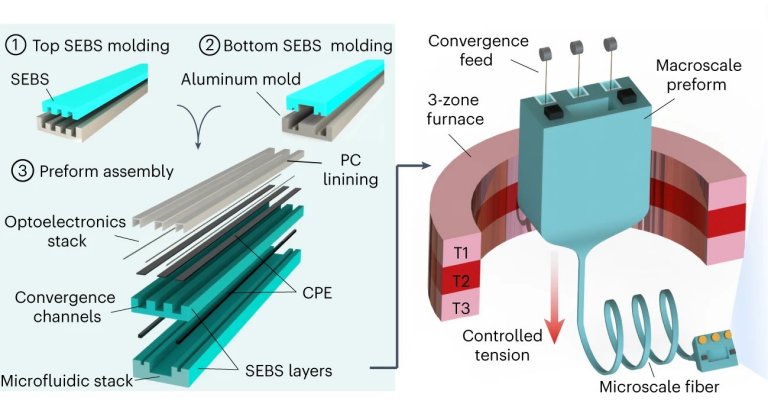06/27/2023
Editorial health diary

Embedded in sensors and light sources, these flexible fibers can be used to control and monitor connections between the brain and the digestive system.
[Imagem: MIT]
Gut connection
One of the greatest scientific achievements of the early 2000s was the discovery that the brain and digestive system are in constant communication, transmitting signals that help control eating and other behaviors.
This vast communication network also affects our mental state and has now been studied in connection with many neurological disorders, including Parkinson’s disease, Alzheimer’s and autism.
The problem is that these studies are complex and we still don’t have the technology that allows us to study these long-distance neural connections directly.
The good news is that the first equipment for this purpose has already been developed: using fibers integrated with a variety of sensors, as well as light sources to stimulate optogenetics, Atharva Sahasrabudhe and colleagues from MIT (USA) have shown that it is already possible to control the neural circuits that It connects the intestines and the brain.
What is remarkable is the versatility of this new tool, allowing neural connections to be measured and stimulated, which will allow the results of each intervention to be studied.

Schematic of the sensor/actuator.
[Imagem: Atharva Sahasrabudhe et al. – 10.1038/s41587-023-01833-5]
measurement and motivation
In the first tests on mice, the researchers stimulated cells that produce cholecystokinin, a hormone that promotes satiety.
When this hormone was activated, the lab animals’ appetite was suppressed, even if they fasted for several hours. The researchers also showed a similar effect when they stimulated cells to produce a peptide called PYY, which normally suppresses appetite after eating foods rich in nutrition.
“The most exciting thing here is that we now have technology that can control gut functions and behaviors such as eating. And, most importantly, we have the ability to start entering into the gut-brain dialogue with millisecond optogenetic accuracy, and we can do this,” said Professor Polina Anikeeva. “This is in animals in their natural behavior.”
The team now plans to explore some of the observed associations between digestive health and neurological conditions such as autism and Parkinson’s disease.
condition: Multifunctional microelectronic fibers enable wireless modulation of neural circuits in the gut and brain
Authors: Atharva Sahasrabudh, Laura E. Ruprecht, Sirma Urgok, Toral Khodiyev, Tomo Tanaka, Joanna Sands, Yukon Zhou, Anthony Tabet, Mary Manthey, Harrison Allen, Gabriel Locke, Mark Joseph Antonini, Dekel Rosenfeld, Jimin Park, Indy C. Garwood, Wei Yan, Farnaz Neroy, Yoel Fink, Anantha Chandrakasan, Diego V. Buhorquez, and Paulina Anikieva
Publication: Nature Biotechnology
DOI: 10.1038/s41587-023-01833-5

“Wannabe internet buff. Future teen idol. Hardcore zombie guru. Gamer. Avid creator. Entrepreneur. Bacon ninja.”

